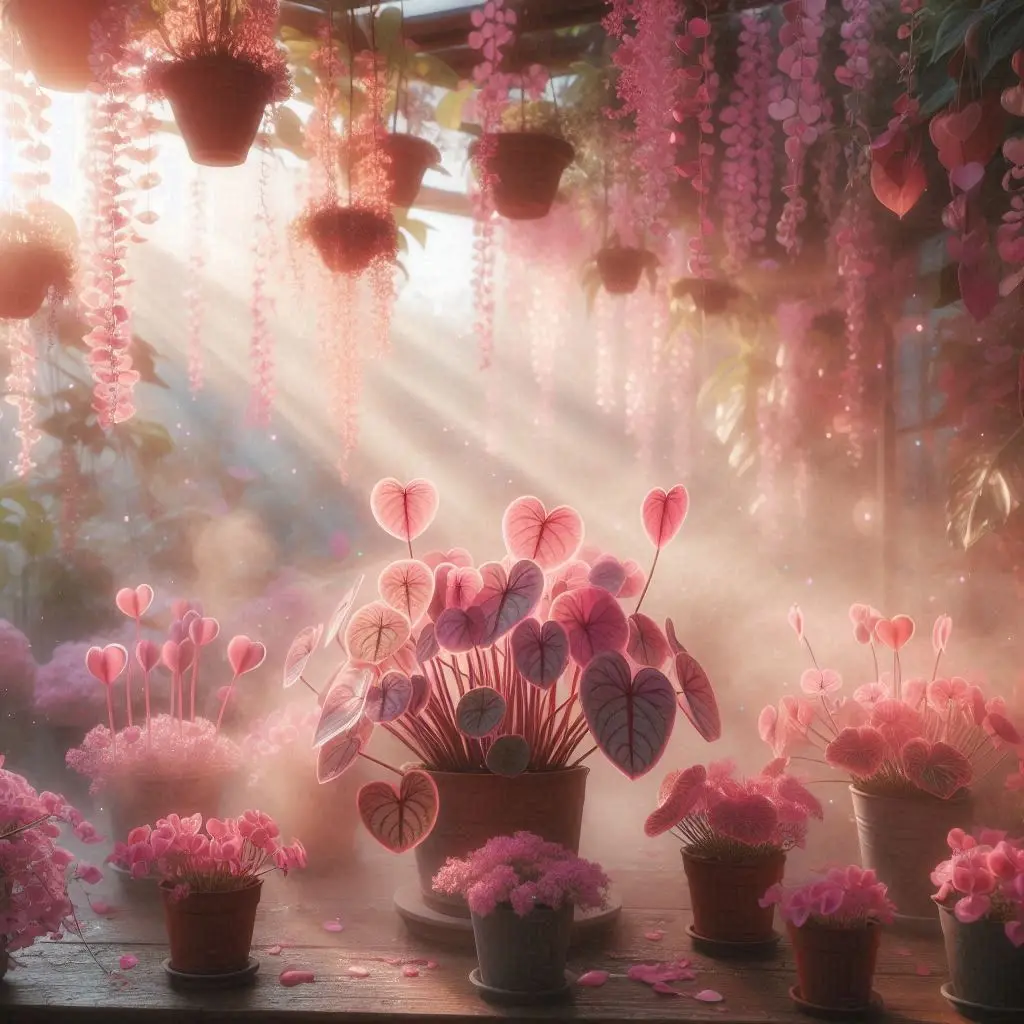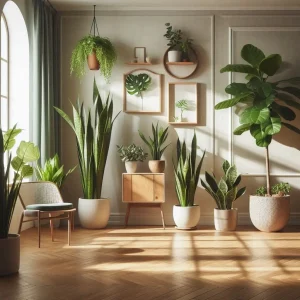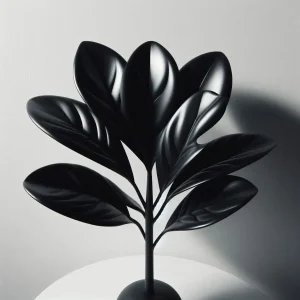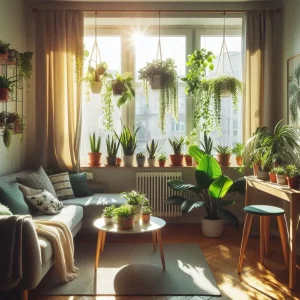Pink houseplants add an extraordinary charm to life and enhance the appeal of your plant collection. Moreover, they are entertaining and unique. If you were to ask your friends to envision a houseplant, they probably wouldn’t imagine a pink one, so if you want to expand your collection and add an exceptional allure to it, consider the vibrant pink houseplants we will introduce below.
Calathea Ornata
Page Contents
Toggle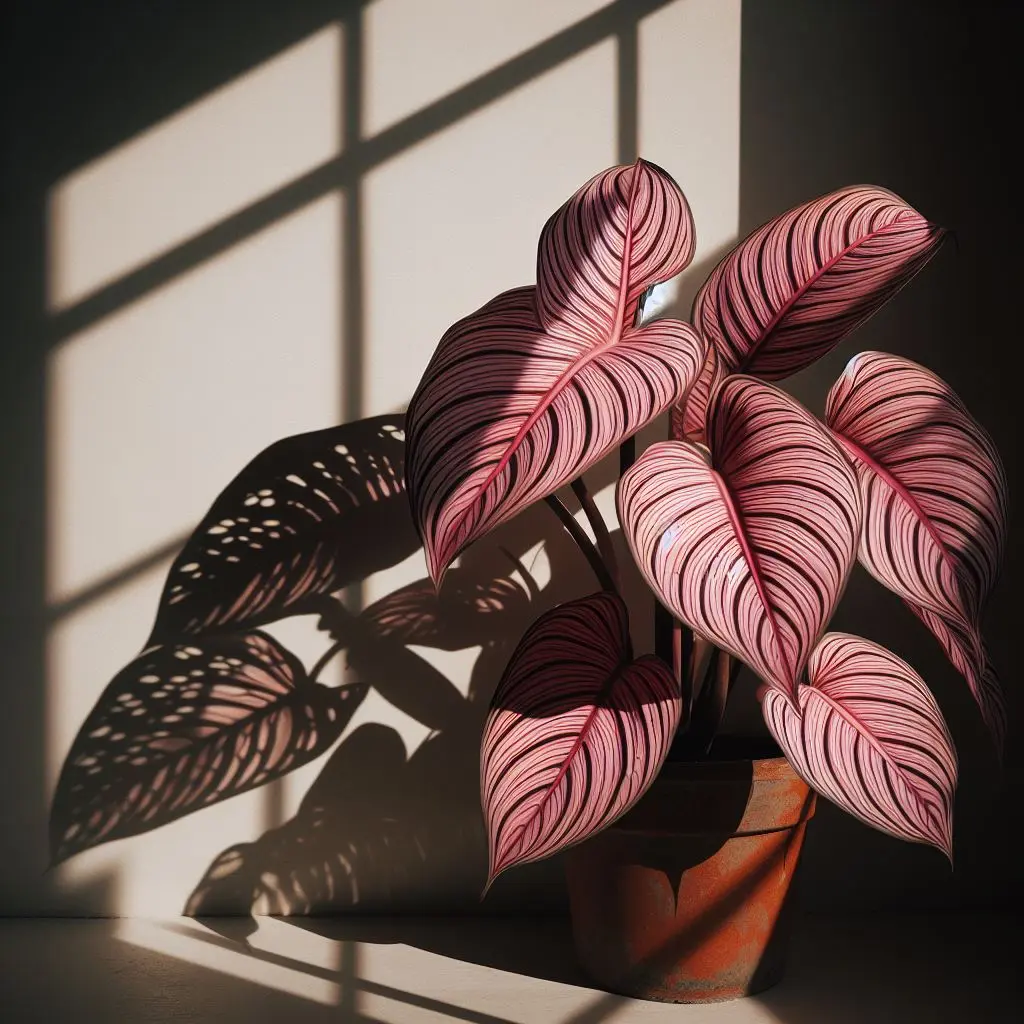
Undoubtedly, this plant is one of the most beautiful houseplants you can care for. Its dark green leaves are adorned with delicate, pinkish lines, and the undersides of its leaves are a deep purple hue. Overall, this plant is exceptionally elegant and charming. An interesting fact about the leaves of this plant is that when the air gets dark, they fold upwards, which is why it’s also called the “prayer plant.”
Calathea Triostar
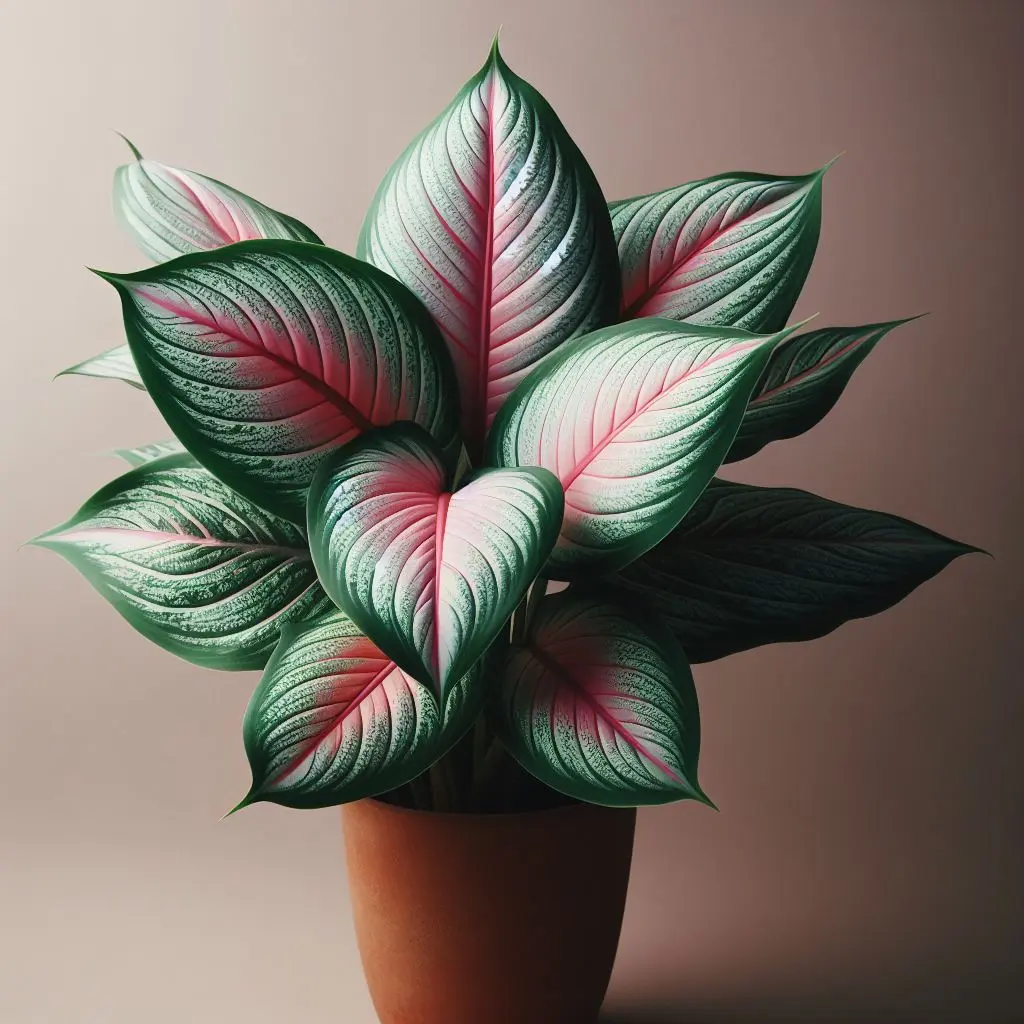
This plant boasts incredibly beautiful and unique leaves, with a combination of pale pink and green on the top surface and a burgundy underside, creating a fascinating and eye-catching blend. It prefers moist but not soggy soil. It requires indirect light as direct sunlight can damage its leaves.
Aglaonema Pink

This color variation of Aglaonema is exceptionally beautiful and unique, attracting its own dedicated fans. The care conditions for Aglaonema Pink are not significantly different from other varieties, with perhaps only a slightly increased need for light due to its colorful leaves. It’s also interesting to note that Aglaonema is one of the best air purifiers and contributes significantly to health benefits.
Ficus Elastica Pink

This charming low-maintenance beauty with its beautiful, glossy leaves is very lovable and can grow to a considerable height. To encourage growth, place it in a small pot.
read more: Houseplants for Feng shui
Succulent
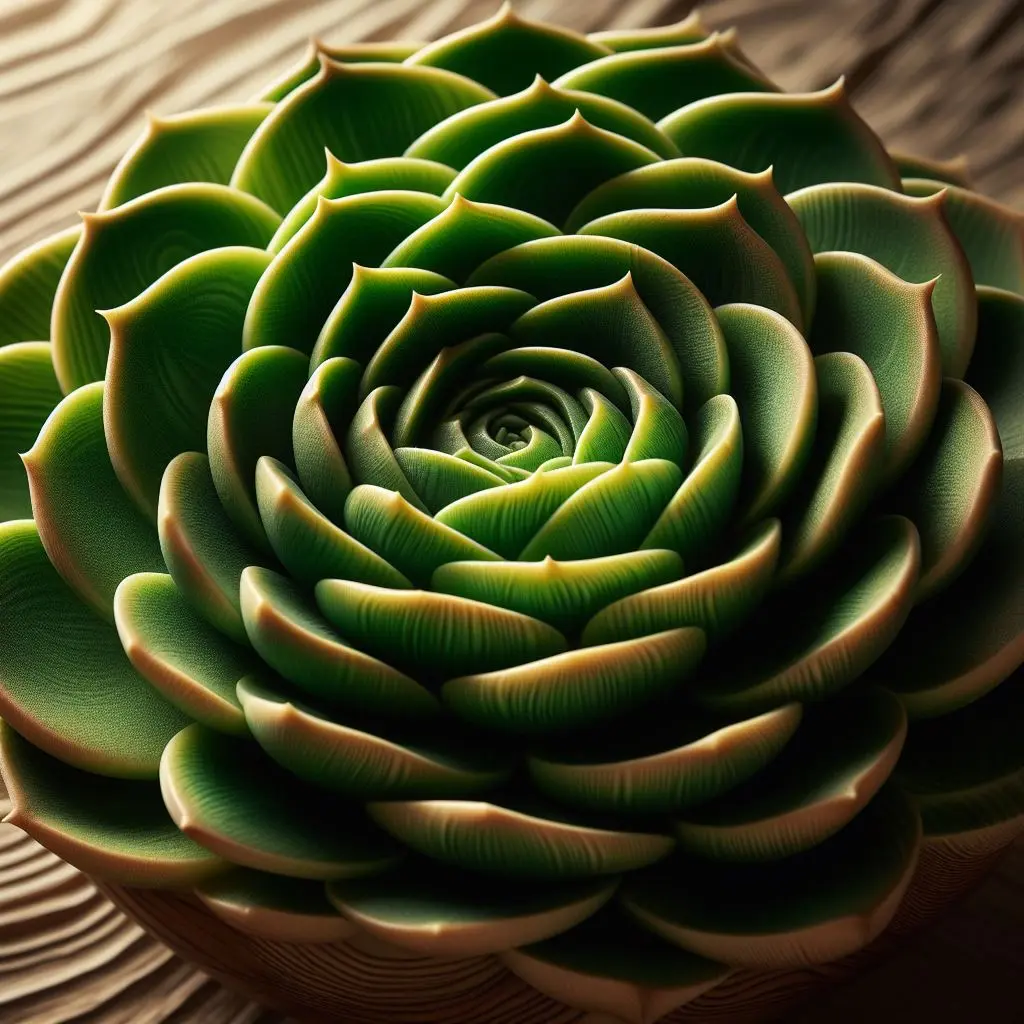
The succulent is one of the pink indoor plants and it is very easy to care for and grow with its small and beautiful leaves. Succulents are usually known for their prominent and unusual stems and leaves. The color patterns on the leaves of this plant are very popular and eye-catching, and you can create a beautiful miniature garden with it. Keep the soil moderately moist.
Tradescantia

Another name for this plant is “Moses in the Cradle.” The leaves of the Tradescantia are pink and green, while the undersides of its leaves are purple, giving it a unique beauty. This plant can be kept both indoors and outdoors. Tradescantia prefers moderate to bright light and requires watering once or twice a week depending on the conditions.
Pink Anthurium
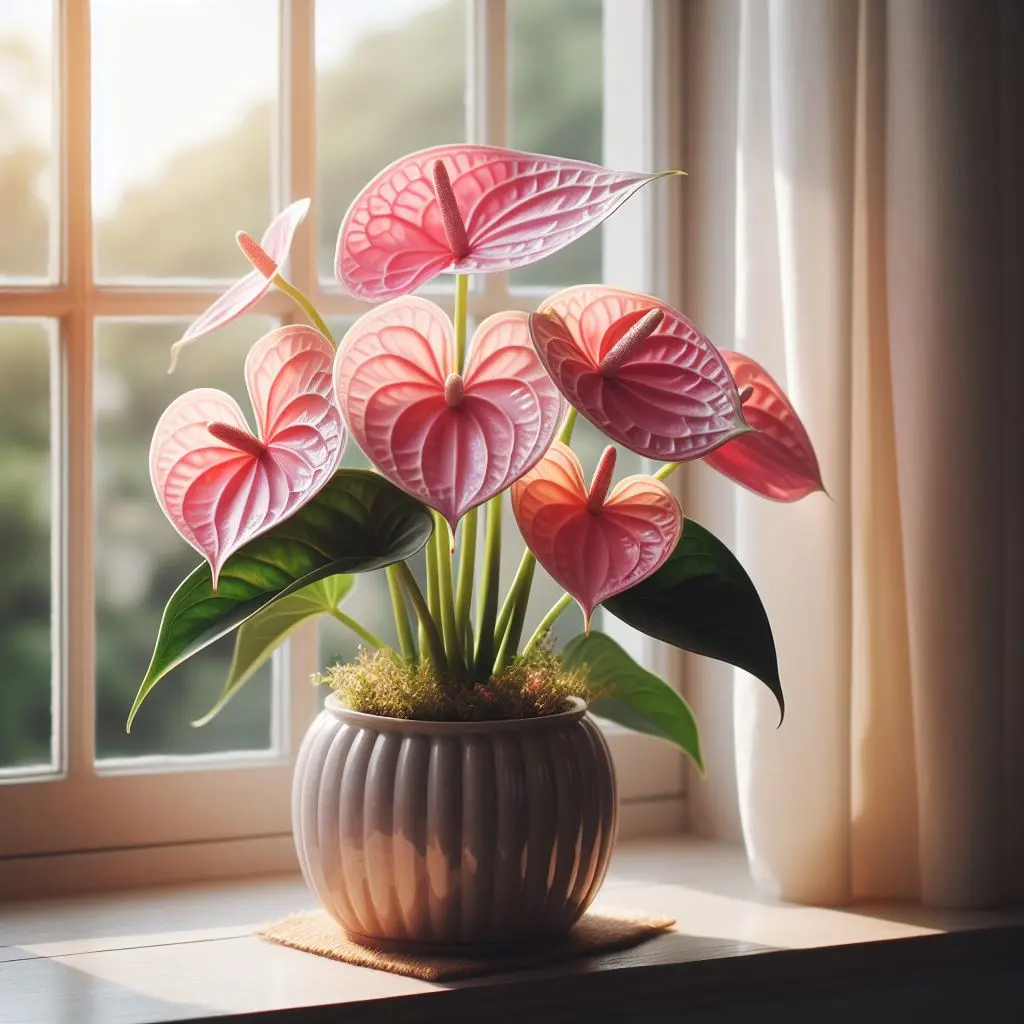
This pink houseplant is highly popular among Iranian families, and its leaves can display various shades ranging from pink and red to blue and purple. Pink Anthurium requires plenty of light due to its colorful foliage and should be watered when the soil surface dries out.
Cordyline
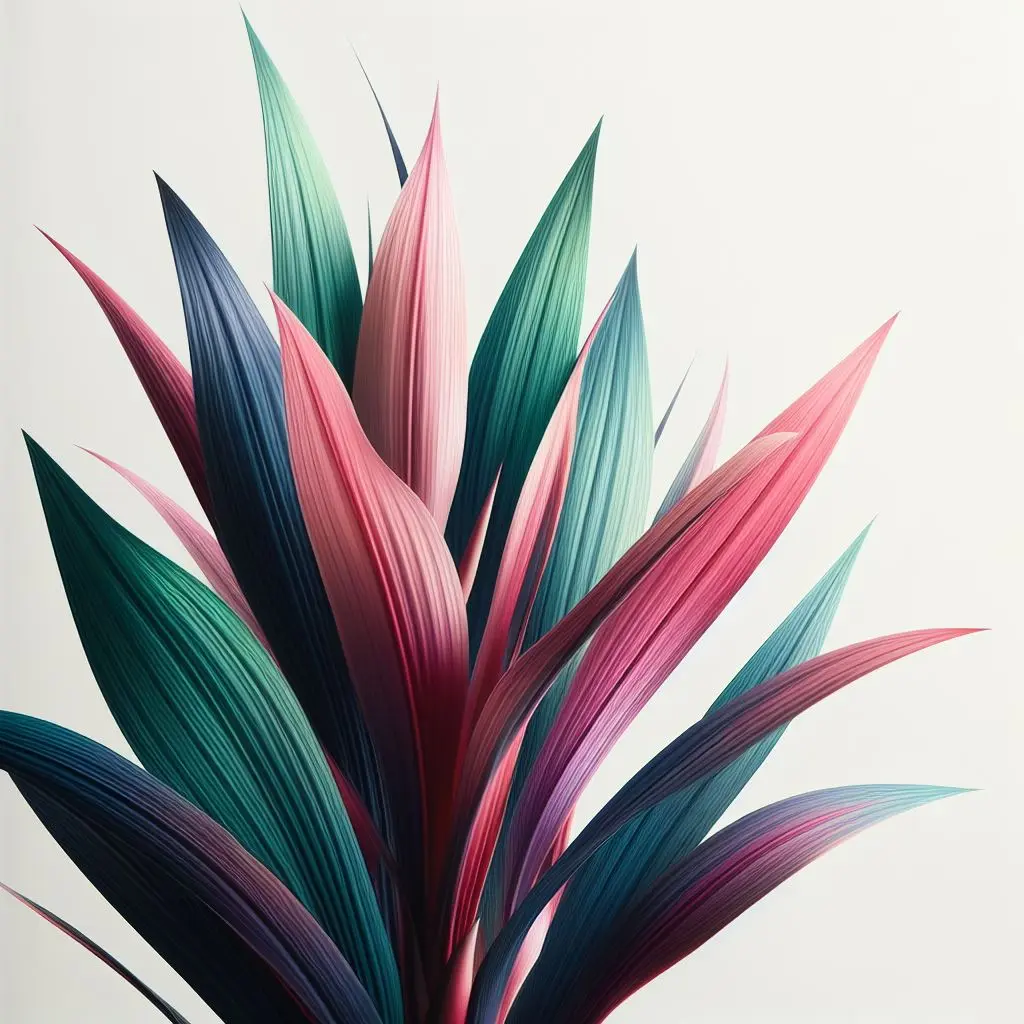
The edges of Cordyline’s leaves are pink, which creates a beautiful and eye-catching combination with its dark green foliage. This plant with its fiery leaves requires moderate to bright light and should be watered when the soil surface dries out.
Dracaena Marginata

Dracaena Marginata is also among the pink houseplants. Its leaves feature a combination of different colors, with slender and drawn-out foliage adorned with a pink edge, creating a beautiful and captivating appearance. The stalked varieties of this plant are also very beautiful and decorative, and they are used in interior decoration designs.
Pink Fittonia Plant
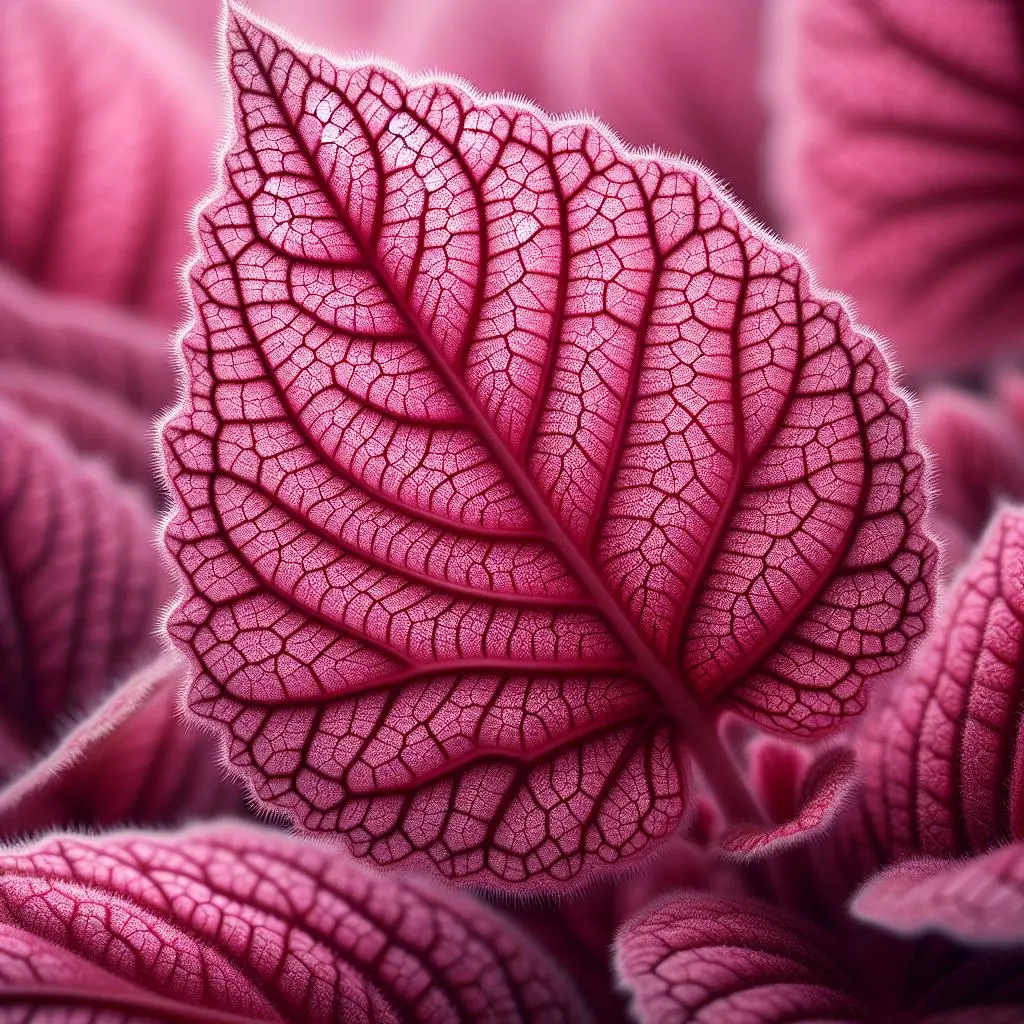
If you’re considering purchasing a pink houseplant, then the Fittonia plant is an excellent choice for you.
Fittonias are incredibly beautiful plants, often adorned with stunning veined leaves, and they come in various colors, but undoubtedly, the best hue for them is pink. Fittonias are small plants that look fantastic for use in terrariums.
They prefer indirect light and it’s best to keep their soil moist. When they need watering, you’ll notice their leaves drooping, but once watered, they perk back up, making them a great choice for beginners.
Stromanthe Sanguinea Plant

Stromanthe sanguinea boasts mesmerizing leaves with a combination of white, green, and pink. These plants are native to rainforest areas, so it’s best to keep them in a warm and humid environment. They prefer bright, indirect light and before watering, ensure that the top layer of soil has completely dried out.
Calathea Ornata Plant
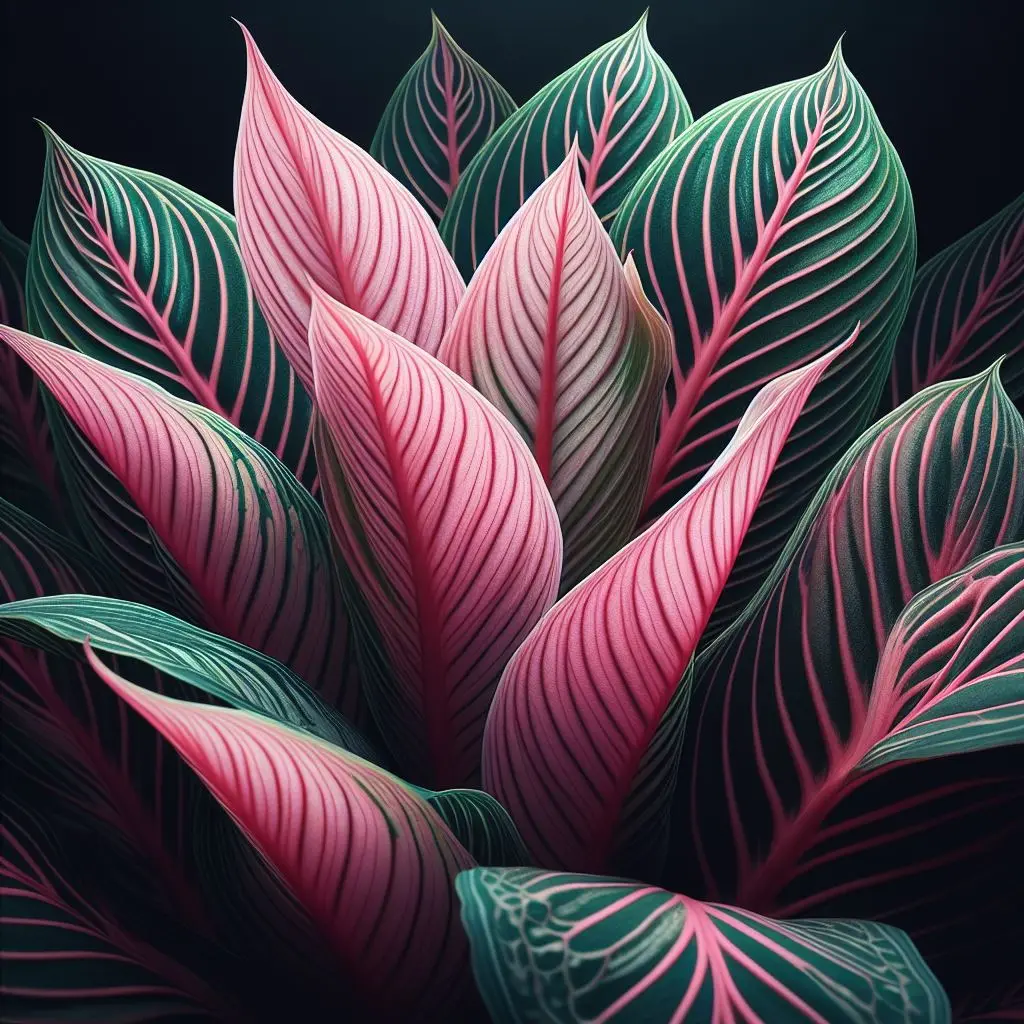
Calathea plants require relatively high maintenance, so if you’re a beginner in plant care, this plant may not be suitable for you. There are various types of Calathea plants that are pink in color and have significant charm. These plants love bright, indirect light and high humidity. If you have a window in your bathroom that receives good light, these plants will thrive there.
Caladium: A Captivating Pink Houseplant
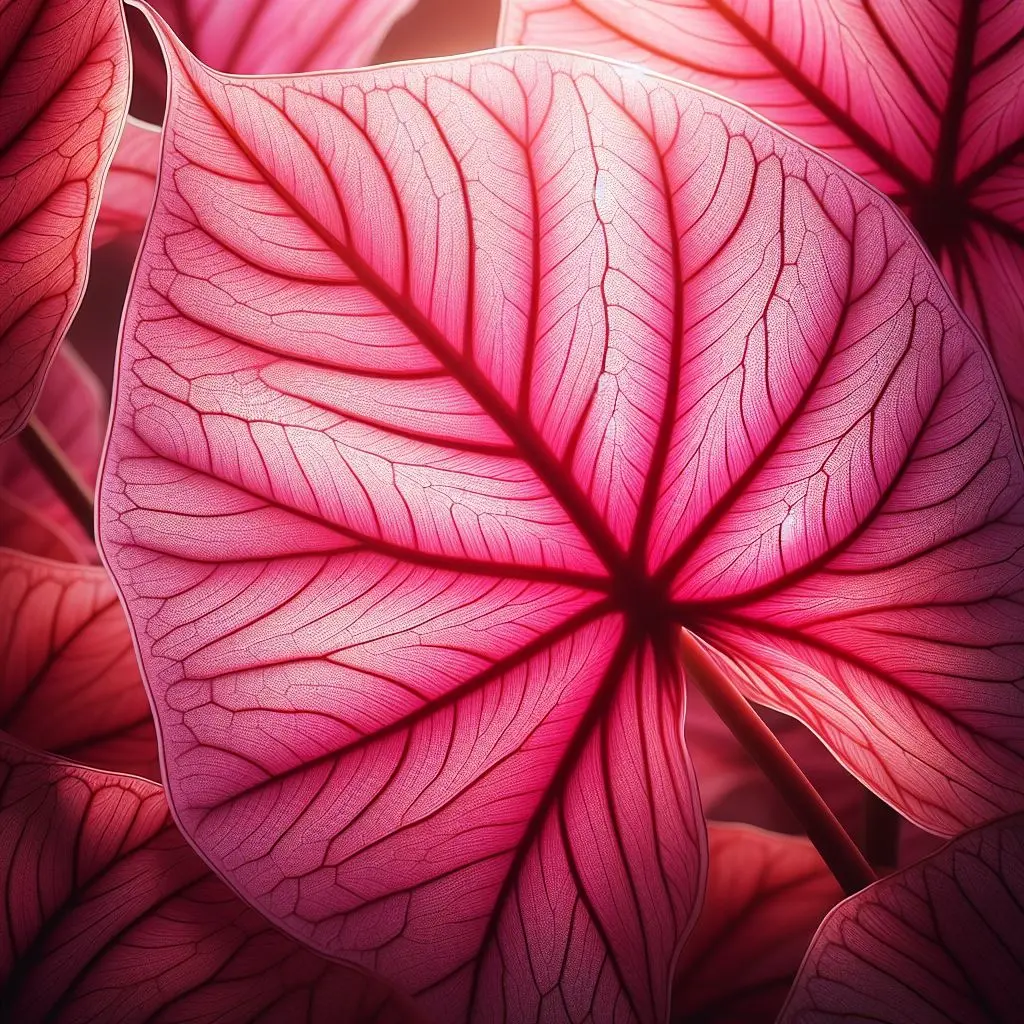
Caladiums are truly fascinating plants that can thrive both indoors and outdoors. They come in several different colors, and there are even varieties with completely pink leaves.
If you’re caring for these plants indoors, it’s best to place them in a location with good light but away from direct sunlight. If you intend to keep Caladiums outdoors, make sure they are positioned in a shaded area during the day.
They prefer their soil to dry out between waterings, so be sure to use pots with good drainage for these plants.
Syngonium Plant
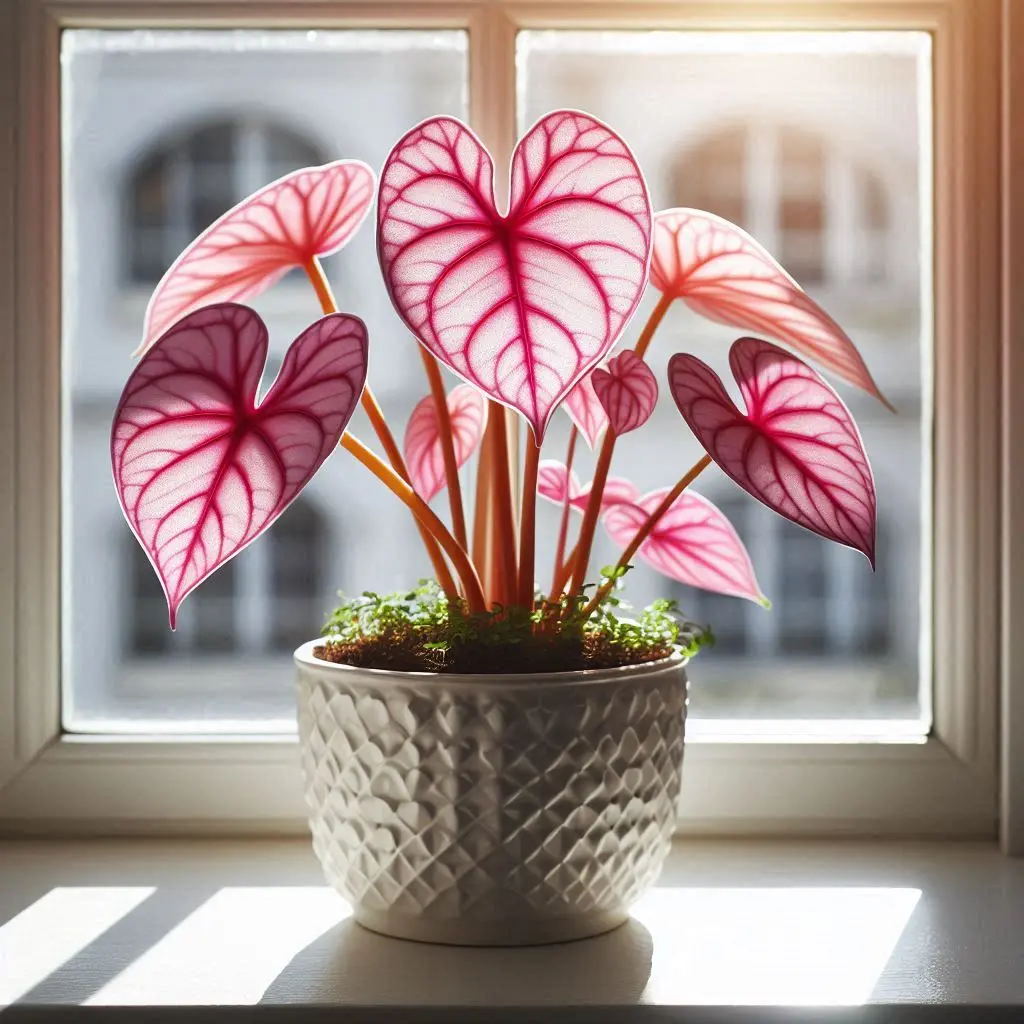
Syngonium, a pink houseplant, requires minimal care and attention and can tolerate low light. This plant comes in a range of green and pink colors, allowing you to enjoy its pink leaves. However, if you want the pink color of its leaves to stand out, you should keep it in indirect light.
Placing them near a window is an excellent way to achieve this. Syngonium doesn’t require much watering; however, it enjoys humidity, so be sure to regularly mist it.
Begonia Rex Plant
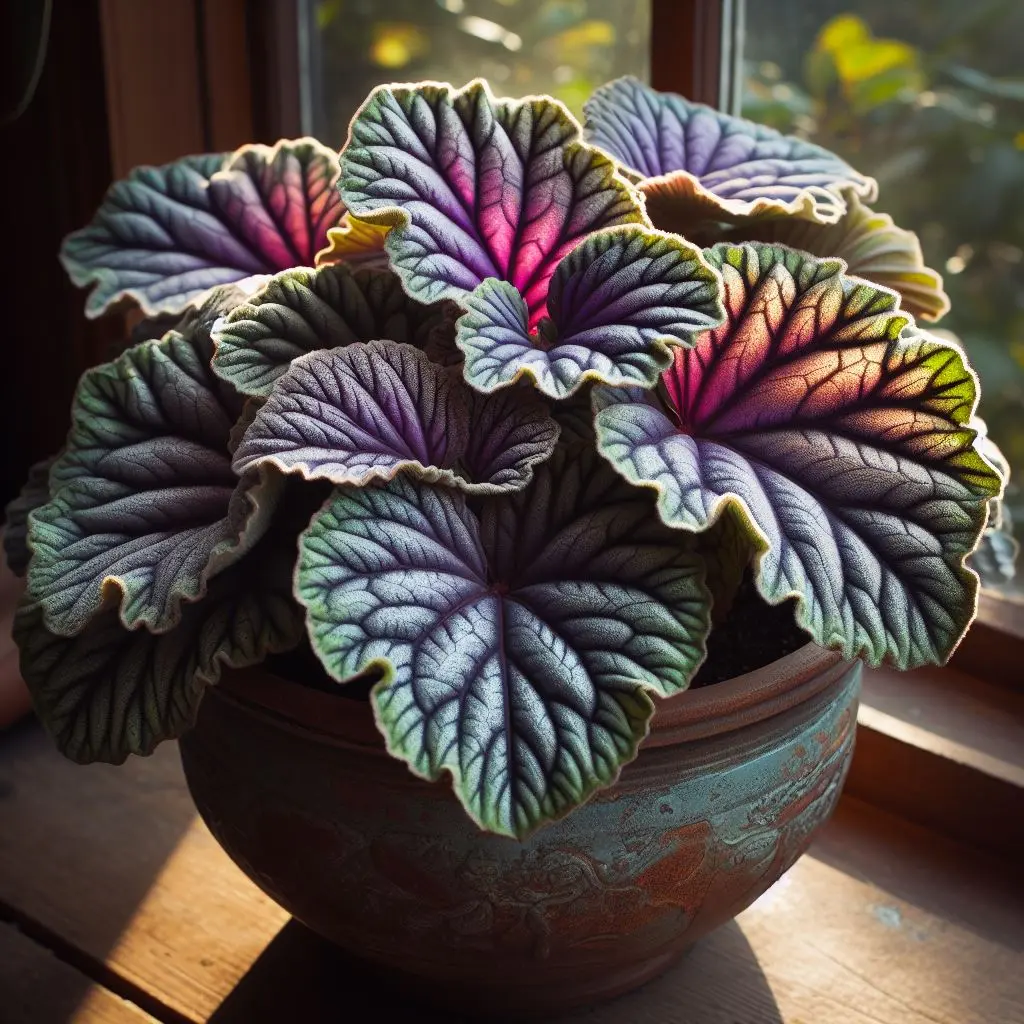
There are several beautiful varieties of Begonia Rex plants with shiny pink leaves, and they are relatively easy to care for and propagate. These plants prefer bright, indirect sunlight and dislike their soil completely drying out between waterings.
Anthurium Andraeanum Plant
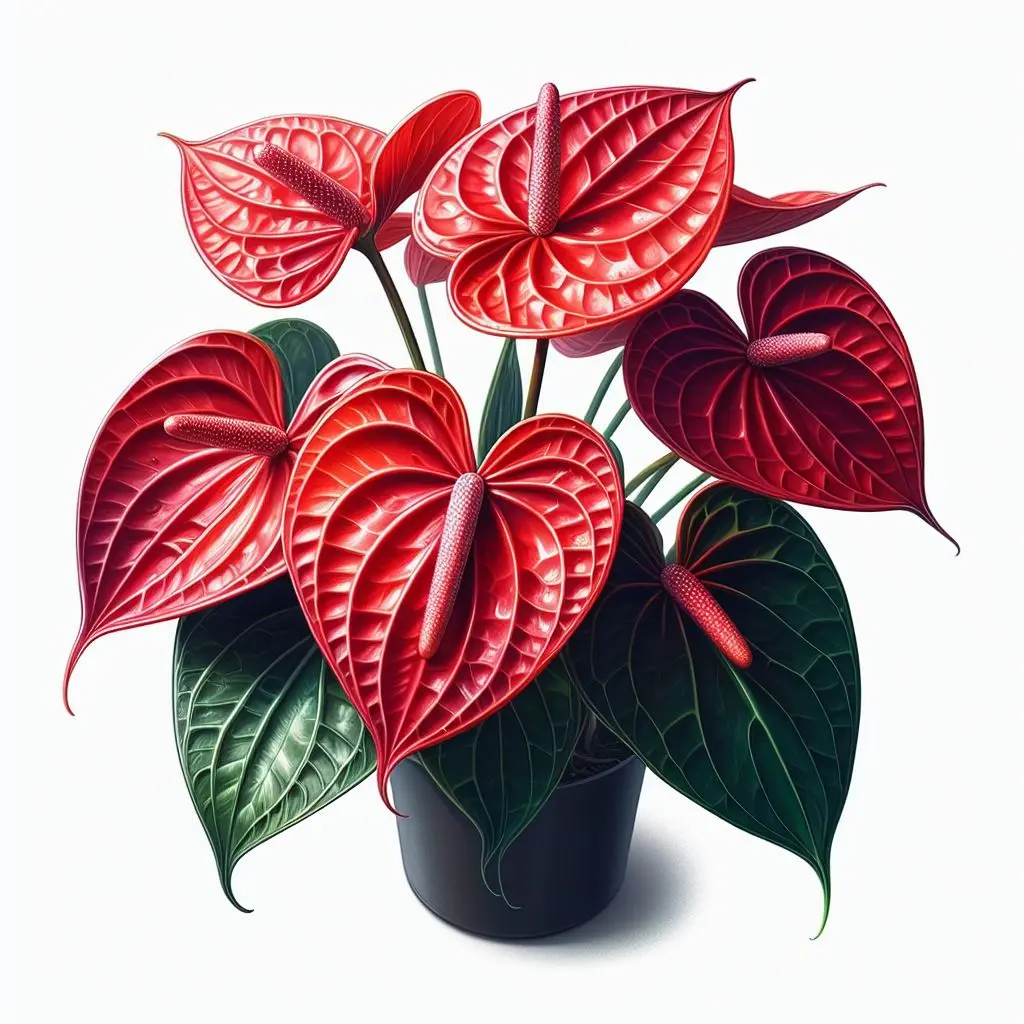
Anthurium Andraeanum features green leaves and pink flowers, with the pink color being so beautiful that with proper care, the plant can bloom throughout the year. They thrive in high humidity and indirect light, so water them when the top layer of soil has completely dried out.
Pink Philodendron Plant
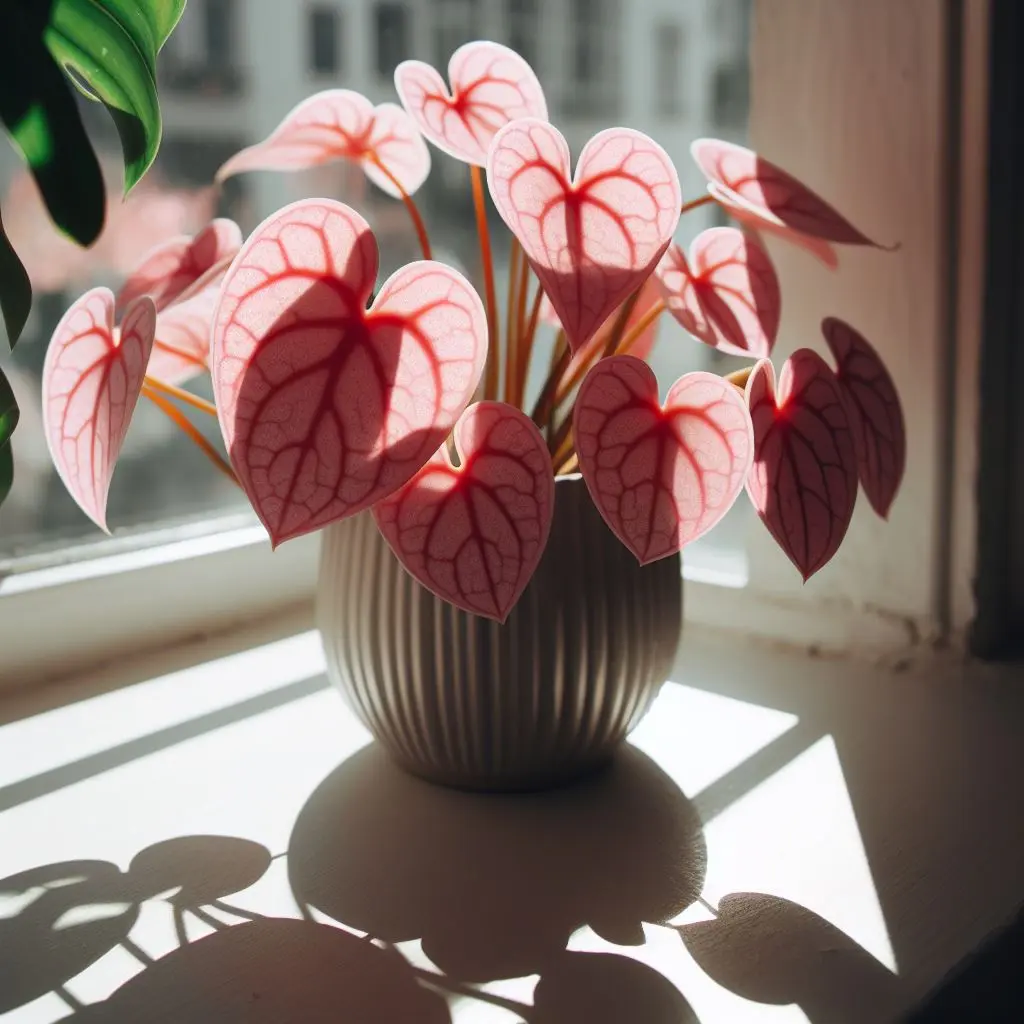
Pink Philodendron plants with large pink and green leaves have a unique beauty. Although these plants can be a bit pricey, their attractiveness makes them worth it. Moreover, they are genuinely easy to care for. They prefer indirect light and well-draining soil. Water the plant when the top layer of soil has dried out.
Get to know Tradescantia Nanouk with the name Fantasy Venice with the help of the ecoclubofficial website:
The Tradescantia Nanouk also known as the fantasy Venice is a great starter plant. This pink, purple, and green plant grows really well in bright light! They don’t need much humidity because of their thick leaves. BUT, she will thrive in a humid environment. Bring her into your bathroom while you shower, and she will live her best life. She likes to be in moist soil, so watering once a week is perfect. Place her into a hanging basket and watch her grow!
FAQ
Is for pink houseplants difficult?(are pink houseplants difficult plants?)
No, some of them, like Caladiums, grow easily, and caring for them isn’t hard.
Which are the most popular pink-leaved plants?
Some varieties like Caladiums, Begonias, and Syngoniums have striking foliage, including pink leaves, making them popular among people.
How do plants get their pink color?
This is due to natural pigments like anthocyanins present in plants, which are responsible for the color changes that occur in plants.

